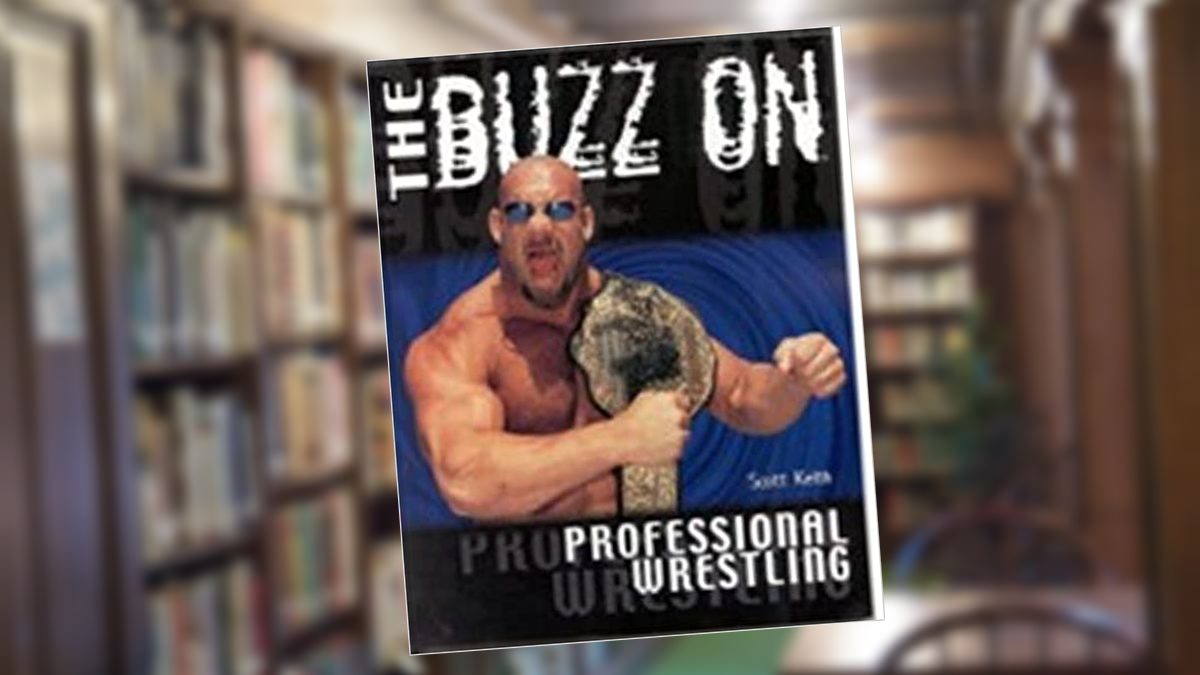Ahh the glory days of wrestling. Hulkamania was running wild. Ric Flair was on top of the NWA. Everything seemed perfect.
Was it though?
As Scott Keith reveals in the new book, The Buzz on Professional Wrestling, the fantasy-like images in the squared-circle were not the reality. Behind the scenes power struggles and backstabbing ran rampant in wrestling, and still does today. Keith’s writing is one of the best I have seen in quite some time. As a wrestling journalist, Keith is privy to a lot of the behind the scenes information, and he really brings out the politics behind who gets what matches in the organizations.
The book looks at the different eras of pro wrestling, from the golden age of the mid 1980s, to the dark-ages of the early-90s, to the modern day re-birth of sports entertainment. Keith looks at the development of wrestling through the careers of the top stars in the feds of their time, from Hulk Hogan, Ric Flair, and Randy Savage, to Steve Austin, The Rock, and Goldberg. This unusual form is definitely one of the most thorough reports that I have seen, in that it presents both sides in certain feuds (for example, Hogan and Savage’s initial teaming before WrestleMania 4 and subsequent break-up), thus giving a full picture of what occurred.
Other stars in each federation and their career highlights are introduced through their interactions with the profiled stars. For example, we see Ricky “The Dragon” Steamboat’s career in Savage’s and Flair’s chapters. This method is a pretty good way to include the highlights of some of the mid-card wrestlers, but I feel that more time could have been spent on telling their stories. When you are only profiling the main eventers of the wrestling world, you are leaving out a vast amount of detail. Consider, for example, that wrestlers like Mick Foley, Jake “The Snake” Roberts, and Jeff Jarrett are not profiled, and you begin to see that there are elements missing from the book.
The biggest surprise in the book is that Vince McMahon is not profiled. Over the past 20 years, not one name stands out more than Vincent K. McMahon. Not only was he the driving force behind bringing wrestling to its modern day, worldwide appeal, but his on-screen role as the evil boss, with the at-times-kind heart, has been one of the most compelling characters over the past few years. Keith profiles Eric Bischoff and his rise through the ranks of the AWA (American Wrestling Association) to the Presidency of WCW, but does not talk about McMahon’s own efforts to get his company to the top.
Speaking of the AWA, Keith devotes a chapter to Verne Gagne’s old league that helped launch the careers of Hogan, Bobby “The Brain” Heenan, and Shawn Michaels among others. His description of the rise and fall of the once third wrestling organization is very well done and very informative. What mystifies me, however, is why he talks about the AWA and not ECW (Extreme Championship Wrestling). ECW has arguably been the biggest influence on the more (for lack of better terms) extreme-style of wrestling we see on television today. Not only that, ECW hosted some of the top stars in the business, including Foley (as Cactus Jack), Chris Benoit, and Rey Mysterio Jr. The exclusion of ECW (save for a few notes on the fed in Austin’s chapter) is a major stumbling point and one that should have been covered more. Also missing from the book is the women of wrestling. The book advertises that it talks about female wrestlers “from babes like Chyna to bimbos like Major Gunns.” Strangely, there is little covered on the women, save for supporting cast roles to the likes of Savage and Triple H. Like it or not, women like Chyna, Sable (Rena Mero), Lita, The Fabulous Moolah, Wendi Richter, and Madusa were all major parts of wrestling’s success. You simply can’t ignore the mainstream exposure that wrestling got when Sable and Chyna posed for Playboy, and they were arguably as recognized stars as anyone in wrestling. In terms of the backstage stories that are prevalent in the book, more should have been done about the original screwjob with Richter, and Madusa’s dumping of the WWF Women’s Championship belt into the trash on WCW Nitro. Never mind that some of the backstage fights among the women (such as the stories of conflicts between Luna Vachon and Sable) are just as compelling as those with their male counterparts.
The bottom line with The Buzz is that it is entertaining and informative. Keith captures the reader and makes then want to read on. His omissions are certainly puzzling, and one can only hope that a sequel will follow.
Overall, I would recommend this book to wrestling fans, though the reader should be prepared for certain missing parts of wrestling’s recent history.
